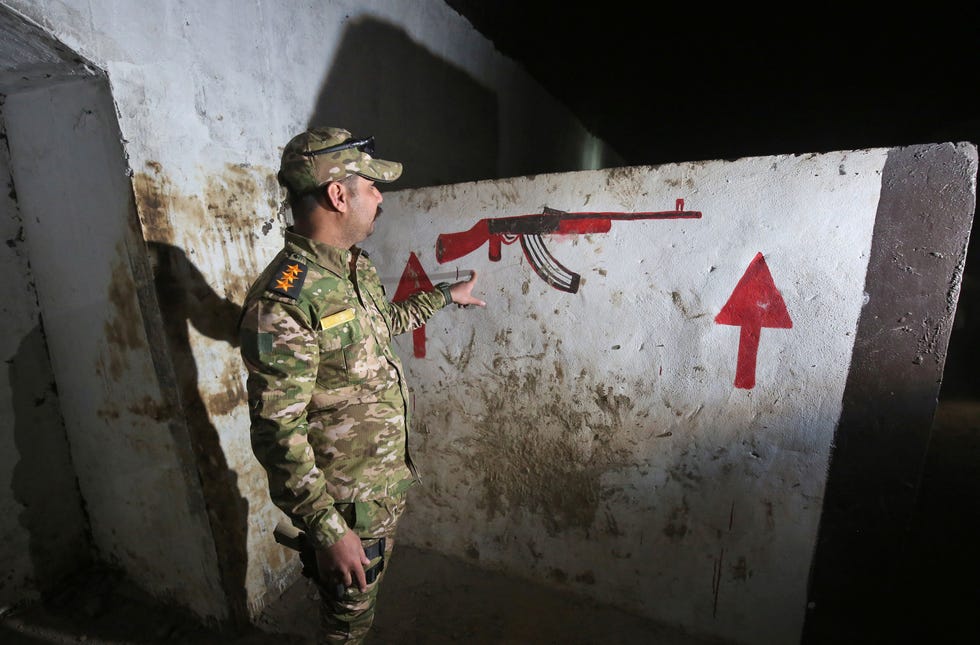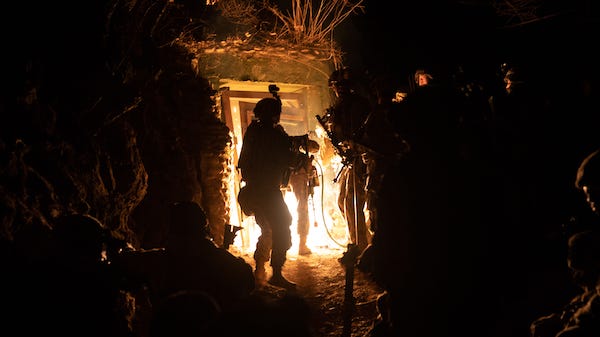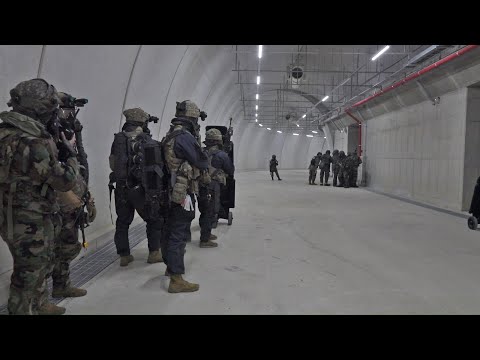KYLE MIZOKAMI
 Armies around the world are zeroing in on underground complexes as future battlefields.
Armies around the world are zeroing in on underground complexes as future battlefields.- Subsurface warfare is stripped of luxuries like tanks and air support, but armies are bringing new tools to the fight.
- Today, the U.S. Army is training to fight in caves, tunnels, sewers, and other underground complexes.
One of the oldest battlefields in the history of warfare is back.
The U.S. Army recently took part in an underground training exercise, called Exercise Warrior Shield, in March earlier this year. Soldiers practiced subterranean warfare tactics at training facilities in South Korea, including breaching entrances to underground buildings.
This type of subsurface exercise is increasingly being implemented by armies around the world. Underground complexes, first warred over by our primitive ancestors, are now seen as critical terrain in places like Korea, the Middle East, and the world’s major cities. Subsurface warfare is stripped of luxuries like tanks and air support, conducted in darkness at point-blank range, but armies are bringing new tools of their own to the fight.
The Subterranean World

In recent years, the world’s armies have woken up to the idea that eventually, their soldiers might have to go down into a hole filled with enemy troops. The superiority of western armed forces, particularly in the areas of artillery and air power, have forced their potential adversaries to pick up a shovel and switch on the concrete mixer. Non-state actors like ISIS and Hamas have gone underground, as well entire armies such as those of North Korea and Iran.
Underground complexes vary in their size and composition. In the Middle East, the terrorist group Hamas started building tunnel complexes in the late 2000s. Today, it has an estimated 300 miles of tunnels, using them to cache weapons, conceal command centers, and as an underground highway system across the Gaza Strip. Islamic State fighters have built fighting tunnels in northern Syria, Iraq, and Afghanistan.
Some countries have built extensive tunnel complexes to shelter their armed forces. North Korea constructed thousands of underground facilities capable of hiding fighter jets, artillery, and large troop concentrations. It also dug a number of tunnels under the demilitarized zone to infiltrate neighboring South Korea with combat troops. Iran has built much of the facilities supporting its nuclear weapons program underground, and it recently opened an underground base housing fighter jets in the south of the country.
There’s also another subterranean combat zone, one probably less than a hundred feet from you right now: sewers. The Army believes that sewers will be a major component of fighting in so-called “megacities,” or cities with a population of ten million or more, such as Seoul, Kinshasa, and Lagos. The sewers of major cities offer miles of ready-made tunnels, similar to fighting tunnels, for those willing to hold their nose and use them.
Underground Challenges

Fighting underground is very different from fighting above ground. Underground facilities are typically cramped with narrow pathways, as no one likes to dig any more than necessary. This makes it impossible to bring along manned combat vehicles, many of which are 12 feet wide or wider and have the unfortunate side effect of polluting stale air with engine exhaust. Soldiers must carry weapons, ammunition, and medical supplies on their backs and carry out wounded troops on their own.
There are also serious environmental challenges. Underground facilities by their very nature are typically dark. Air circulation is poor, and bad air, chemical fumes, and smoke from gunpowder adds up very quickly. Sounds are magnified, concussive blasts funnel through tunnel spaces, and radio waves don’t travel very well. The only consolation is that these effects apply equally to both the tunnel invaders and defenders.
One way armies are dealing with the prospect of underground warfare is by training early. In 2019, the U.S. Army released ATP 3-21.51, its how-to guide to subterranean operations. The Army trains for subterranean combat on the Korean peninsula, where it may have to enter caves and underground complexes to root out North Korea’s weapons of mass destruction. The British Army, French Army, other NATO armies, and even the Austrian Army (which rarely leaves home) train their soldiers to fight underground.
Subterranean Solutions

Armies are using technology to meet the challenges of the subterranean battlefield. Some of the tech, like M40 field protective masks for poor air quality, are borrowed from other uses. Heavy equipment such as sledgehammers, plasma cutters, shotguns, and other breaching tools can overcome locked doors and underground obstacles.
Other tech has been developed to support tunnel operations. U.S. soldiers in Korea use wheeled armored shields (see above) to provide mobile cover in featureless tunnels where there is no place to hide from bullets and shrapnel. In 2017, the Army’s Rapid Equipping Force developed a wireless pedometer that uses frequency-hopping transmitters, allowing commanders to know how far into an underground system their soldiers have traveled.

One of the most promising technologies for underground combat is drones. The U.S. Army also uses drones (see video above) as tunnel scouts to clear the way ahead—or deliver an explosive charge. DARPA is further developing drones with an eye towards underground exploration: the agency’s Sub-T challenge sought to deal with the issues of how drones underground would sense their environment, work autonomously, transverse uneven terrain, and communicate with their human operators.
The Takeaway
Subterranean warfare has probably existed since the caveman days. Despite the difficulty, in some cases the stakes are so high—as with North Korea and its nuclear weapons—that armies will have no choice but to take the fight to what is often a vast, foreboding underworld.
The armies of the West must successfully demonstrate they can pursue their enemies even underground, holding them at risk, and that negotiations—not war—are the only true option.
No comments:
Post a Comment